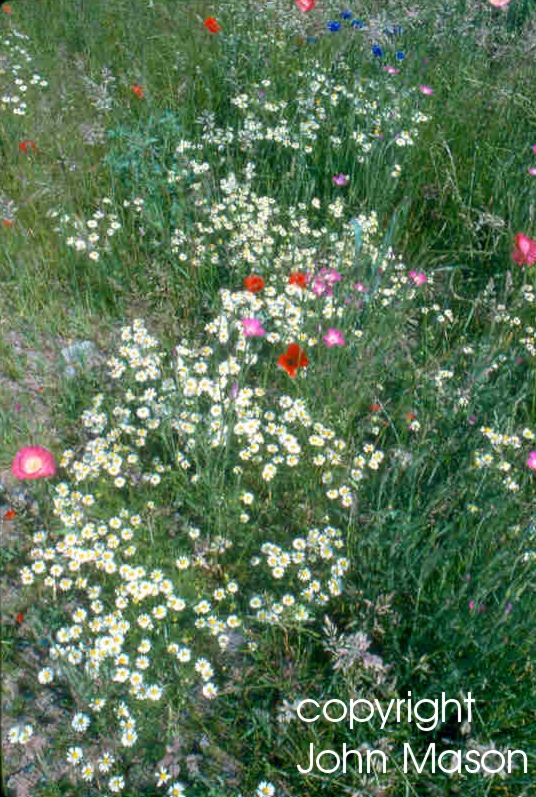CEREAL FIELD MARGINS
LOCAL BIODIVERSITY ACTION PLAN
 Links to associated SAPs
Links to associated SAPs
Farmland birds
Current Status
A cereal field margin can be described as a strip of land lying between a cereal crop and the field boundary, and extending for a limited distance into the crop. These areas can be deliberately managed to create conditions which benefit key farmland species, particularly important as this century has seen the extensive decline of a number of farmland species.
The Cheshire region is primarily considered as an area of pastoral agriculture but cereal production is on the increase. The extent of existing cereal field margins is at present unknown within the Cheshire region. Under the Food and Environment Protection Act 1985 it is illegal to spray into hedge bases, unless there is a specific label recommendation.
A costed Action Plan for Cereal Field Margins is included in the UK Steering Group Report (1995).
Threats
- Intensification and mechanisation of cereal production
- Increased trend towards autumn sown cereal crops causing the reduction of stubble available over the winter period for birds and invertebrates
- Increased use of non-selective pesticides and broadleaved herbicides to ensure a weed and disease free monoculture
- Increased use and incorrect timing of the application of fertilisers
- Reduction in rotation of cereal crops with other land covers (inc. grass leys and fallows)
How are we helping to conserve cereal field margins in the Cheshire region?
- Cereal field margins are targeted under the MAFF Countryside Stewardship Scheme. In 1998, 7,196 metres of permanent grass margins greater than 6 metres were created under the scheme in Cheshire. Set-aside requirements can be met by setting aside a minimum of 20 metres.
- Initiatives run by the Game Conservancy Trust are leading to the retention of headlands.
- The Soil Association recommend subdivision of fields into 25 acre plots by means of 'wildlife corridors' which can include grass strips and that areas adjoining hedges or other field boundaries should be left unsprayed by agrochemicals.
Objectives and Local Targets
OBJECTIVES |
LOCAL TARGETS |
To identify, protect and expand the extent of cereal field margins in the Cheshire region. |
Targets awaited |
ACTIONS REQUIRED |
- Form a Local BAP Action Group for cereal field margins.
- Restrict the use of fertilisers and herbicides by careful management.
- Promote favourable management through appropriate schemes, e.g. Countryside Stewardship and set-aside agreements.
- Promote the planting and maintenance of hedgerows to compliment the field margins by providing shelter and additional food source (berries).
- Promote the establishment of cereal field margins to act as wildlife corridors.
- Encourage the retention of winter stubble as shelter.
- Promote the creation of six metre (minimum) field margins planted with non-invasive perennial grass.
- Encourage conversion to organic farming practices.
|
Progress so far
| 1997- 2006 Action Completed |
|
How to find out more about Cereal Field Margins
The Wirral Biodiversity Action Plan for Field Boundaries can be seen at www.wirral.gov.uk/ed/biodiversity/fieldb.htm
UK BAP for cereal field margins - www.ukbap.org.uk/UKPlans.aspx?ID=8
Contact details
| LBAP Chair |
Mark Greenhough, BASC
Phone: 01244 573000 |
| National Lead Partners |
Department of the Environment, Food and Rural Affairs (DEFRA)
|
| National Contact |
Ann Davies, DEFRA
Phone: 020 7238 6448 |
References & Glossary
British Agrochemical Association (1997): Arable Wildlife: Protecting Non-target Species.
Game Conservancy Trust: Guidelines for the management of field margins - Recommendations for the management of field margins, incorporating the field boundary, boundary strip and outer few metres of the cereal crop. Fact Sheet 2.
FWAG: Farming and Field Margins Booklet.
HMSO (1995): Biodiversity: The UK Steering Group Report, Volume 1: Meeting the Rio Challenge, London.
HMSO (1995): Biodiversity: The UK Steering Group Report, Volume 2: Action Plans, London.
Draft North West Regional Biodiversity Audit (unpub.): Cereal field margins habitat statement.
EFRC and University of Wales, Aberystwyth.
Organic Farm Management Handbook.


 Links to associated SAPs
Links to associated SAPs